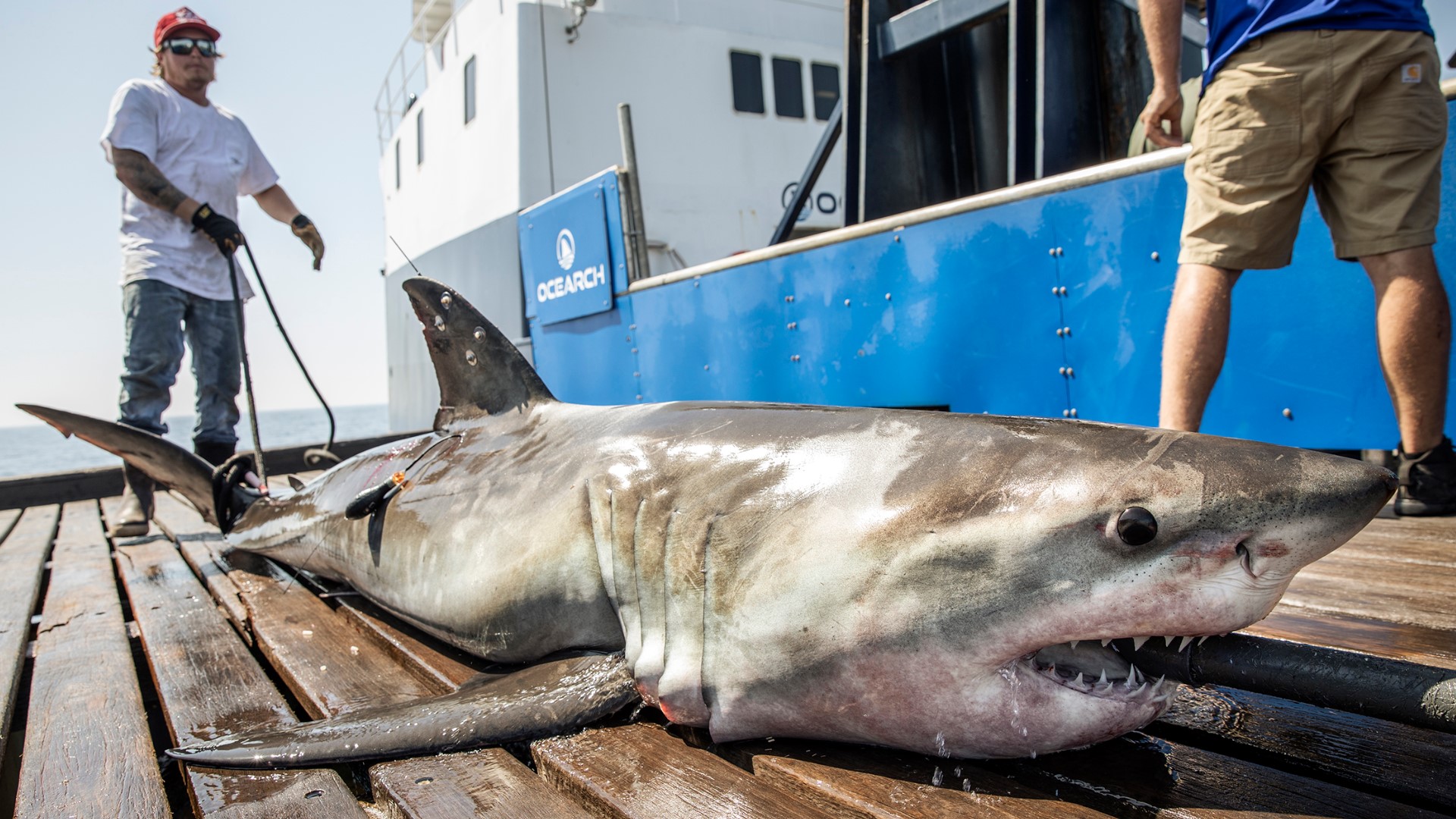ST. PETERSBURG, Fla. — Within the past month, five great white sharks have pinged off the coast of Florida, according to data from OCEARCH. Some are within just a few miles from where beachgoers often swim at Florida's most popular beaches.
From the panhandle to the Florida Keys to the Palm Coast, there don't seem to be many places along the state's shoreline a great white shark has not been linked to.
But how close to the coast are they swimming?
When looking at the travel paths of the five great white sharks who visited the Sunshine State this past month, it was Keji, a 9-foot young shark, who got the closest to Tampa Bay. He was roughly 5 miles off the coast of Longboat Key in Sarasota last year.
In 2022, Keji made a stop 500 feet from the shore of Man Key, a small island popular for boaters to anchor down and swim around. Man Key is about five miles west of Key West.
The Florida Keys sees a lot of pings from sharks tagged by OCEARCH, and that's likely because many sharks swim back and forth from the east and west coast of the state, passing by the peninsula's tip each time.
Here's a look at the great white sharks that have hung out near Florida's shores recently:
Most recently, on Tuesday, a 10-foot, 600-pound great white named Rose pinged near the Florida panhandle but not anywhere near where anyone would be swimming at the beach. In February, though, she swam about five miles offshore while crossing the Florida-Georgia border.
The closest Rose has swam to the Tampa Bay area was two years ago when she pinged about 30 miles off the coast of Reddington Shores in St. Pete.
On Sunday, a 10-foot, 522-pound white shark named Penny's tracker popped up just over 40 miles west of Cape Coral. On her way there, she passed Boynton Beach, just 8 miles from the shoreline.
OCEARCH said they tagged Penny in North Carolina, and she's since been tracked up and down the east coast of North America from Nova Scotia to the Gulf of Mexico. This travel path is mirrored by most other great white sharks who go for a swim in Florida's waters.
Keji pinged near the panhandle on March 15. When the juvenile shark was tagged in 2021, he weighed 578 pounds. His name comes from the area where he was tagged in Nova Scotia: Kejimkujik National Park and National Historic Site.
A 13-foot great white shark weighing 1,701 pounds was tracked to roughly 15 miles off the coast of St. Augustine on Feb. 29. Mahone is the largest male shark tagged by OCEARCH in Canadian waters, according to the organization.
He's never pinged in Tampa Bay's waters, though, let alone Florida's west coast. The furthest south he's swam is Cape Canaveral.
Slightly smaller but closer to shore, Scot, a 12-foot and 1,644-pound great white, was just three and a half miles away from the southern coast of the Florida Keys on Feb. 28. In June 2022, he pinged about two miles offshore in Boynton Beach.
Does that mean it's more dangerous to swim in Florida waters?
Florida led the nation in the number of shark bites recorded in 2023, according to research from the University of Florida and the Florida Museum. Sixteen "unprovoked" shark bites were reported for the entire year, which makes up 44% of the total number of shark bites in the U.S. The majority of shark bites are "test bites" that happen when a shark mistakes a person for a big fish.
Experts say it's still extremely rare to become the victim of a shark bite and even more rare for the bite to be fatal. The chances of dying from a shark-related incident are one in four million, according to The Florida Museum. The organization said deaths from getting stuck in a rip current happen at an average of 40 times the rate of shark bite deaths.

